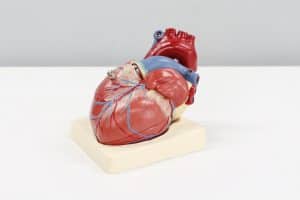
Making strides in hepatitis
pharmafile | June 19, 2017 | Feature | Business Services, Manufacturing and Production, Medical Communications, Research and Development, Sales and Marketing | Janssen, Johnson & Johnson
Pharmafocus caughtup with Lawrence Blatt, Janssen’s Global Therapeutic Area Head, Infectious Diseases and Vaccines, to discuss the progress being made in the battle against hepatitis through pushing down treatment durations and investigative new mechanisms.
Where does hepatitis treatment currently stand today?
I always say, ‘what you need to know in virology, you learn in HIV drug development’. What I mean by that is that drugs in HIV initially enhanced efficacy, but were quite unsafe. Later, the real breakthrough in HIV was the combination with protease inhibitors or heart therapy. Then safety was optimised, and now we have single-tablet regimens or long-acting formulations – there are other ways of making it easy for the patient to receive their drugs. That feeds back into efficacy and safety because if you don’t miss a dose, you’re going to be more efficacious; if you miss a dose, you may develop drug-resistance.
If you look at hepatitis C (HCV), efficacy certainly has been optimised, and safety is pretty much there too, especially considering the benefits they confer. Now, the world is working on drugs that are more convenient or ways of delivering them which could address more patients. In the case of our combination in HCV, duration of treatment is a very important component of the regimen. Back in the 90s, we were talking a year of interferon therapy; that evolved to six months, then to twelve weeks, and now people are looking at some of the newer regimens which bring it down to eight weeks, but no one had manged a duration shorter than that.
What we were able to do was combine an asset that Janssen had – simeprevir – with an asset that came of the Alios acquisition, which was an HCV nucleotide analogue called AL-335. Shortly after I joined Janssen, I led the effort to in-license odalasvir from Achillion, which is an NS5A inhibitor that has a very nice profile, including a long half-life. We were able to do is combine those three compounds together, and we demonstrated that in genotype-1 patients – which in the western world represents 70-75% of patients, and in Asia represents more like 90% – we had 100% response with only six weeks of therapy.
Why is it so important to bring down treatment duration in this indication?
It matters for a couple of reasons. If you look at how HCV is treated right now, it is primarily approached by specialised doctors with a high degree of training – the hepatologists. If you look at the capacity of hepatologists who treat HCV and chronic HCV patients, in the US that is something like 200,000 patients per year, and Europe is a similar number. If you think about the fact that there are millions of people living with HCV even after therapy has been out there for a while, then in order to address this epidemic, we need to increase the throughput.
If it’s a very simple regimen, perhaps it doesn’t have to be administered by hepatologists – maybe it can even go to a primary care physician with consult from a hepatologist. That would further increase the throughput and reduce the cost of delivery, because an appointment in a hepatology clinic is much more expensive than one in primary care.
Is the aim to bring down patient populations to such an extent that the virus stops spreading as quickly and becomes much more manageable?
That certainly is a lofty goal. If you think about the routes of transmission of HCV, many of the traditional ones have been shut down, and that had to do with blood contact from the healthcare industry – blood screening is certainly now in full gear around the world. The primary new cases of HCV come from intravenous (IV) drug use, and unfortunately, in both the US and Europe, there’s a resurgence of IV drug use and opiate addiction, and that’s increasing the spread of HCV. Could there be strategies to get into rehab clinics where you could access these individuals and treat populations to try and eradicate that? That’s certainly something that’s being talked about.
The number of IV-infected individuals who are in this population is extremely high; HCV is transmitted more efficiently than either hepatitis B (HBV) or HIV through this route, and yet they may be in the rehab centre for 4-8 weeks. So, if you can’t treat them or get them cured along with the rehabilitation from the drugs, they may go out and infect other people or not have access to healthcare.
So what about developments in the treatment of HBV?
HBV is a very interesting field. In many ways, it’s basically 20 years behind where we are with HCV, in spite of the fact that there are approved therapies on the market. It is a very ancient virus which infects over 300 million people worldwide, making it the most prevalent virus that causes morbidity and mortality in the world. Unfortunately for us as virologists, HBV doesn’t make a lot of enzymes so we don’t have a lot of targets – we have to be more clever than we’ve been with other viruses.
Some treatments that have been developed are nuceloside and nucleotide analogues, which are interesting because they block the replication of the virus – however, they don’t lead to an increased rate of seroconversion, and so they need to be lifelong therapies. While they are associated with a reduced risk of advancing to end-stage liver disease or cancer, they don’t completely shut that down and sufferers can still progress in their disease. What we would like to do is to identify new mechanisms that could increase the rate of patients who have this seroconversion, and for these patients to become negative for surface antigen. Then we’d like to see the antibodies for surface antigen come up, and, in that state, liver inflammation is reduced.
Is this gap in our understanding of the B and C strains a result of the complexity of HBV?
As virologists, we really have our hands tied if we can’t grow the virus in cell culture, and one of the things that really helped us in the early days of HIV was that you could grow it almost as soon as it was discovered, and that facilitated screening. In HCV, we didn’t have a cell culture system until the 90s. Similarly, in HBV, we haven’t had a cell culture system in place until about the last five years, and now we can screen multiple mechanisms against HCV – that’s really the reason why HBV is so far behind.
There are many labs screening and looking at different mechanisms. I would expect that over the next 2-5 years you’re going to see quite a few breakthroughs and certainly some disappointments in HBV.
What are you focusing on currently within the field?
At the moment, we’re working on multiple mechanisms. We have a programme with gene silencing in oligonucleotides both in-house and with an external collaborator. In addition to trying to modulate the viral replication – either through capsid modulation or anti-sensor sRNA – we’re also working on the immune system because, interestingly enough, the reason HBV can go chronic and stay so long in the patient is because it very effectively shuts off the adaptive immune response. We’re looking at immuno-modifiers that we hope can break that tolerance T cell exhaustion that occurs in HBV patients. We’re pursuing this on multiple fronts, one of which is with something called toll-like receptor (TLR) agonists, which are pattern recognition receptors that are there to recognise invading pathogens. We have a small molecule that we in-licensed from a company in China called CTPQ that activates TLR7 – we’re marching forward with that in the clinic.
In addition to that, we’re looking at a very interesting technology where we’re delivering naked DNA which encodes HBV antigens by electroporation – it’s almost like Star Trek! It’s a needleless injector that carries the DNA into the muscle tissue via a small electrical current, and what happens is that DNA plasmids go into cells and those cells then transcribe and translate the mRNA, and ultimately the protein. HBV antigens are manufactured, which go on to form a humoral immune response as well as a potent CD4 response. We hope that will go on to selectively seek out and destroy the parasites harbouring HBV.
The idea is to combine these mechanisms because we don’t think that monotherapy of any of these is going to be effective; the real trick is to know which of these mechanisms are going to play well together and which will not. That being said, we’re highly collaborative and we don’t view internal research as the only way forward.
Where do you see treatment progressing in the next 5-10 years?
My hope is that we’re going to have a finite therapy – no longer lifelong – that, in a meaningful number of patients (and it’s really too early to predict what that would be) we have a seroconversion where we can get these patients off therapy and they can return to normal quality of life. That’s really our dream.
Related Content

Johnson & Johnson to acquire Shockwave Medical
Johnson & Johnson (J&J) and Shockwave Medical have announced that they have entered into a …

FDA approves J&J’s Opsynvi for PAH treatment
Johnson & Johnson (J&J) has announced that the US Food and Drug Administration (FDA) has …

Johnson & Johnson acquires Ambrx Biopharma for approximately $2bn
Johnson & Johnson (J&J) has announced that it has successfully completed its acquisition of Ambrx …








